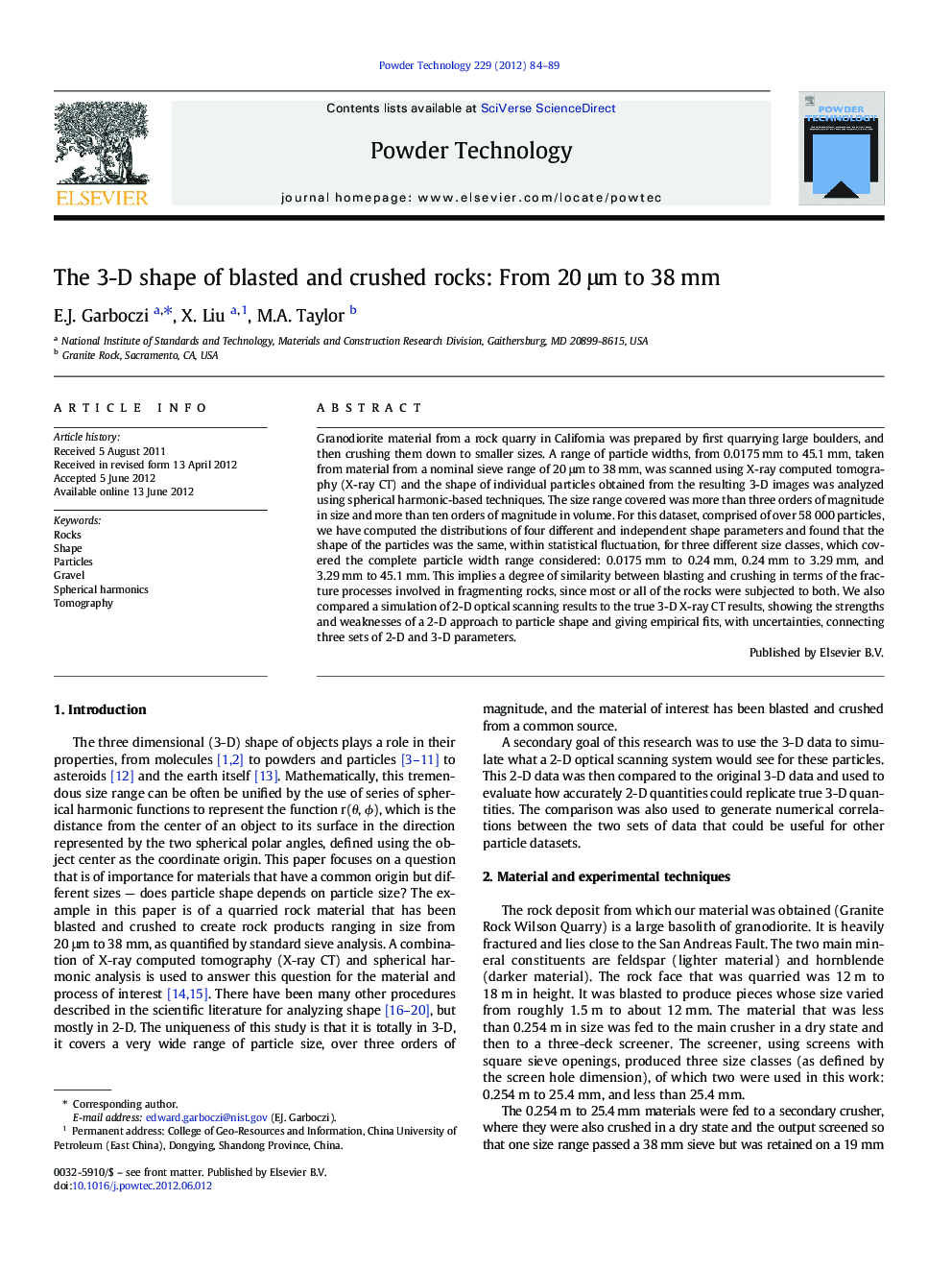| کد مقاله | کد نشریه | سال انتشار | مقاله انگلیسی | نسخه تمام متن |
|---|---|---|---|---|
| 237014 | 465691 | 2012 | 6 صفحه PDF | دانلود رایگان |

Granodiorite material from a rock quarry in California was prepared by first quarrying large boulders, and then crushing them down to smaller sizes. A range of particle widths, from 0.0175 mm to 45.1 mm, taken from material from a nominal sieve range of 20 μm to 38 mm, was scanned using X-ray computed tomography (X-ray CT) and the shape of individual particles obtained from the resulting 3-D images was analyzed using spherical harmonic-based techniques. The size range covered was more than three orders of magnitude in size and more than ten orders of magnitude in volume. For this dataset, comprised of over 58 000 particles, we have computed the distributions of four different and independent shape parameters and found that the shape of the particles was the same, within statistical fluctuation, for three different size classes, which covered the complete particle width range considered: 0.0175 mm to 0.24 mm, 0.24 mm to 3.29 mm, and 3.29 mm to 45.1 mm. This implies a degree of similarity between blasting and crushing in terms of the fracture processes involved in fragmenting rocks, since most or all of the rocks were subjected to both. We also compared a simulation of 2-D optical scanning results to the true 3-D X-ray CT results, showing the strengths and weaknesses of a 2-D approach to particle shape and giving empirical fits, with uncertainties, connecting three sets of 2-D and 3-D parameters.
The 3-D shape of blasted and crushed rocks: From 20 μm to 38 mm, E.J. Garboczi and X. Liu, National Institute of Standards and Technology, M.A. Taylor, Granite rockFigure optionsDownload as PowerPoint slideHighlights
► Blasted/crushed rocks (0.02–45.1 mm) were scanned using X-ray tomography.
► The shape of 58 000 particles was analyzed using spherical harmonics.
► Particle shape was the same over the complete size range.
► Similarity between blasting and crushing when fragmenting rocks
► Simulation of 2-D optical scanning results were fit to true 3-D parameters.
Journal: Powder Technology - Volume 229, October 2012, Pages 84–89